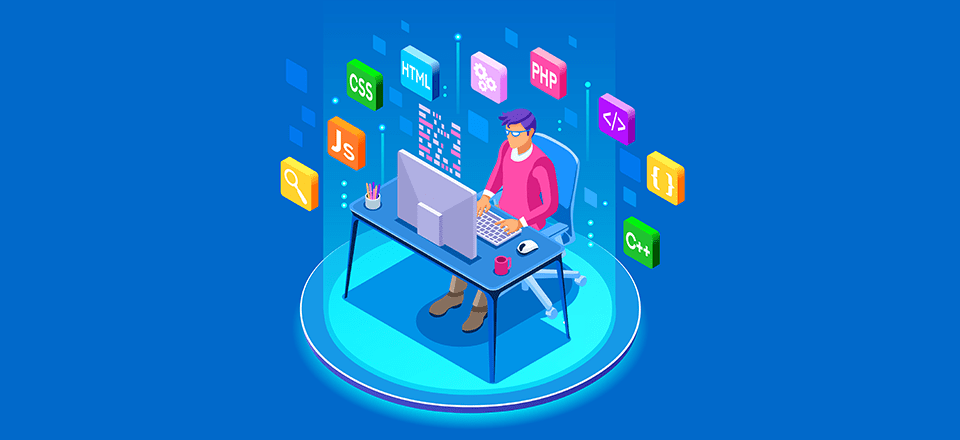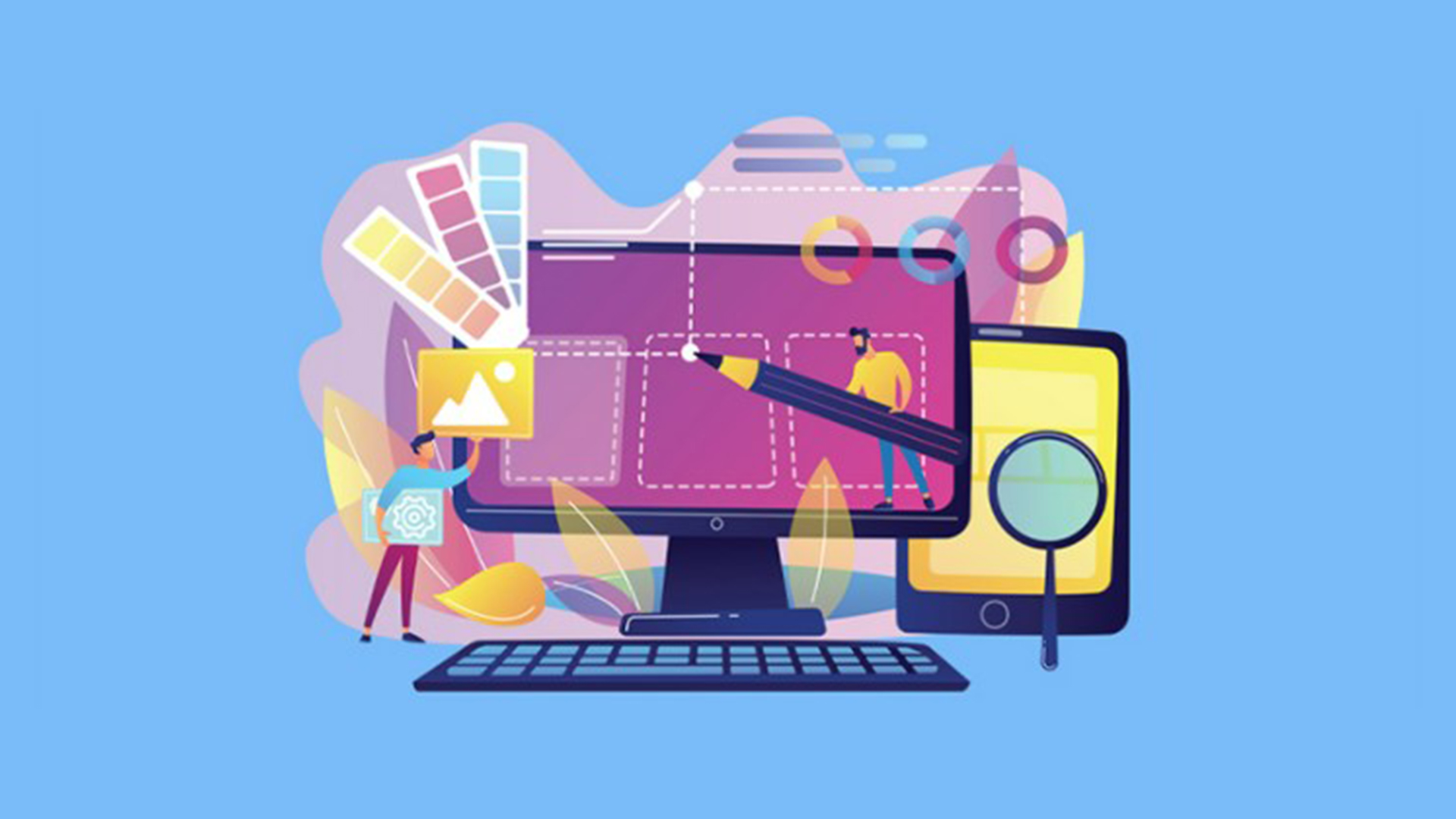All Categories
Featured
Table of Contents
- – What Is Web Design? - Interaction Design Found...
- – Web Design Services By Freelance Website Desi...
- – Boxcar Studio - Wordpress & Drupal Web Design...
- – Learning Web Design: A Beginner's Guide To Ht...
- – $899 - Custom Mobile Friendly Website Design ...
- – Web Design & Seo By Acs - Syracuse Web Design...
- – Web Design - Linkedin Learning, Formerly Lyn...
- – Web Design Definition - Techterms Tips and T...
- – Web Design Services By Freelance Website Des...
- – Web Design And Development - Invision Tips a...
- – The Leader In Website Design – Squarespace T...
What Is Web Design? - Interaction Design Foundation (Ixdf) Tips and Tricks:
Quick summary Usability and the energy, not the visual style, identify the success or failure of a website. Since the visitor of the page is the only individual who clicks the mouse and therefore decides whatever, user-centric style has established as a basic technique for successful and profit-oriented website design - web design frederick md.
and the utility, not the visual style, identify the success or failure of a site. Because the visitor of the page is the only individual who clicks the mouse and therefore decides everything, user-centric style has actually become a standard method for successful and profit-oriented web design. If users can't utilize a function, it may as well not exist.
g. where the search box should be placed) as it has actually currently been performed in a number of articles; rather we focus on the techniques which, utilized effectively, can result in more advanced style choices and streamline the procedure of perceiving provided information. Please observe that you may be interested in the usability-related articles we have actually published prior to: Concepts Of Good Site Design And Effective Web Design Guidelines, In order to utilize the concepts correctly we initially need to comprehend how users interact with sites, how they think and what are the standard patterns of users' habits.
Web Design Services By Freelance Website Designers - Fiverr Tips and Tricks:
Visitors glimpse at each new page, scan some of the text, and click on the very first link that catches their interest or vaguely looks like the thing they're trying to find. In fact, there are big parts of the page they do not even take a look at. The majority of users look for something interesting (or helpful) and clickable; as quickly as some promising prospects are found, users click.
If a page provides users with top quality material, they are prepared to compromise the content with advertisements and the style of the site. This is the reason not-that-well-designed sites with top quality material get a great deal of traffic over years. Material is more crucial than the style which supports it.

Really basic concept: If a site isn't able to satisfy users' expectations, then designer stopped working to get his task done properly and the business loses money. The higher is the cognitive load and the less instinctive is the navigation, the more prepared are users to leave the website and search for alternatives.
Boxcar Studio - Wordpress & Drupal Web Design ... - Ann Arbor Tips and Tricks:
Neither do they scan web page in a linear fashion, going sequentially from one website section to another one. Instead users satisfice; they choose the very first reasonable option. As soon as they discover a link that looks like it may cause the goal, there is a really excellent possibility that it will be immediately clicked.
It doesn't matter to us if we comprehend how things work, as long as we can use them. If your audience is going to act like you're developing signboard, then design fantastic billboards." Users want to be able to control their web browser and count on the constant data presentation throughout the site.
If the navigation and site architecture aren't intuitive, the variety of concern marks grows and makes it harder for users to comprehend how the system works and how to obtain from point A to point B. A clear structure, moderate visual hints and easily identifiable links can assist users to find their path to their goal.
Learning Web Design: A Beginner's Guide To Html, Css ... Tips and Tricks:

claims to be "beyond channels, beyond items, beyond circulation". What does it imply? Given that users tend to explore sites according to the "F"-pattern, these 3 declarations would be the very first components users will see on the page once it is packed. Although the design itself is easy and instinctive, to comprehend what the page has to do with the user needs to browse for the answer.
Once you have actually achieved this, you can interact why the system is beneficial and how users can benefit from it. Do Not Squander Users' Perseverance, In every project when you are going to use your visitors some service or tool, try to keep your user requirements very little.
Newbie visitors want to, not filling long web types for an account they may never utilize in the future. Let users check out the site and discover your services without requiring them into sharing private information. It's not reasonable to require users to get in an e-mail address to evaluate the function.
$899 - Custom Mobile Friendly Website Design By Go Web ... Tips and Tricks:
Stikkit is an ideal example for an easy to use service which requires almost absolutely nothing from the visitor which is unobtrusive and reassuring. Which's what you desire your users to feel on your web site. Apparently, Mite needs more. Nevertheless the registration can be performed in less than 30 seconds as the kind has horizontal orientation, the user doesn't even require to scroll the page.
A user registration alone is enough of an obstacle to user navigation to cut down on inbound traffic. Handle To Focus Users' Attention, As sites supply both fixed and dynamic material, some elements of the user interface bring in attention more than others do.
Focusing users' attention to specific locations of the website with a moderate use of visual aspects can assist your visitors to obtain from point A to point B without thinking about how it really is supposed to be done. The less enigma visitors have, the they have and the more trust they can establish towards the company the site represents.
Web Design & Seo By Acs - Syracuse Web Design - Google ... Tips and Tricks:
4. Pursue Feature Direct exposure, Modern web designs are usually slammed due to their approach of guiding users with visually appealing 1-2-3-done-steps, big buttons with visual impacts etc. But from the style point of view these components actually aren't a bad thing. On the contrary, such as they lead the visitors through the site content in a really easy and easy to use way.
The site has 9 primary navigation choices which show up at the very first glimpse. The choice of colors may be too light, though. is a fundamental principle of successful interface design. It doesn't really matter how this is achieved. What matters is that the content is well-understood and visitors feel comfy with the way they engage with the system.
com gets straight to the point. No cute words, no overemphasized statements. Instead a price: simply what visitors are searching for. An optimal option for reliable writing is touse short and concise expressions (come to the point as quickly as possible), use scannable layout (categorize the content, use numerous heading levels, utilize visual aspects and bulleted lists which break the circulation of uniform text blocks), usage plain and unbiased language (a promotion does not require to seem like advertisement; provide your users some sensible and objective reason that they should utilize your service or remain on your website)6.
Web Design - Linkedin Learning, Formerly Lynda.com Tips and Tricks:
Users are rarely on a website to take pleasure in the design; furthermore, in most cases they are trying to find the details despite the style - web design frederick md. Pursue simpleness instead of intricacy. From the visitors' perspective, the very best website design is a pure text, without any ads or additional content obstructs matching precisely the question visitors utilized or the material they have actually been searching for.
Finch plainly provides the information about the site and provides visitors a choice of alternatives without overcrowding them with unnecessary material. Not just does it help to for the visitors, but it makes it possible to view the information provided on the screen.
Complex structures are more difficult to check out, scan, examine and deal with. If you have the choice in between separating 2 style sections by a noticeable line or by some whitespace, it's usually much better to use the whitespace service. (Simon's Law): the better you manage to offer users with a sense of visual hierarchy, the easier your material will be to perceive.
Web Design Definition - Techterms Tips and Tricks:
The exact same conventions and rules must be applied to all elements.: do the most with the least amount of hints and visual elements. Clarity: all elements need to be designed so their significance is not uncertain.
Conventions Are Our Good friends, Traditional design of site elements does not result in an uninteresting web site. In truth, as they lower the finding out curve, the need to find out how things work. For example, it would be an usability headache if all sites had different visual discussion of RSS-feeds. That's not that various from our regular life where we tend to get used to fundamental concepts of how we organize information (folders) or do shopping (positioning of items).
comprehend what they're getting out of a website navigation, text structure, search positioning etc. A case in point from usability sessions is to equate the page in Japanese (assuming your web users don't know Japanese, e. g. with Babelfish) and provide your use testers with a task to find something in the page of various language.
Web Design Services By Freelance Website Designers - Fiverr Tips and Tricks:
Test Early, Test Often, This so-called TETO-principle should be used to every web style project as use tests typically provide into substantial problems and concerns related to a given design. Test not too late, not too little and not for the incorrect reasons.
Some important points to remember: according to Steve Krug, and testing one user early in the task is much better than screening 50 near the end. Accoring to Boehm's first law, mistakes are most frequent throughout requirements and design activities and are the more expensive the later they are eliminated.
That suggests that you develop something, test it, fix it and after that evaluate it again. There might be problems which haven't been discovered throughout the very first round as users were almost blocked by other problems. usability tests. Either you'll be pointed to the problems you have or you'll be indicated the lack of significant design flaws which remains in both cases a beneficial insight for your project.
Web Design And Development - Invision Tips and Tricks:

This holds for designers. After you have actually worked on a website for couple of weeks, you can't observe it from a fresh viewpoint any longer. You understand how it is developed and therefore you know precisely how it works you have the wisdom independent testers and visitors of your website wouldn't have.
It can be connected to other areas such as graphic design, user experience, and multimedia arts, however is more aptly seen from a technological viewpoint. It has become a big part of people's daily lives. It is tough to picture the Web without animated graphics, various styles of typography, background, videos and music.

During 1991 to 1993 the World Wide Web was born. Text-only pages could be viewed using a basic line-mode internet browser. There had actually been no integrated technique to graphic style aspects such as images or sounds.
The Leader In Website Design – Squarespace Tips and Tricks:
The W3C was produced in October 1994 to "lead the Internet to its complete potential by developing typical protocols that promote its evolution and ensure its interoperability." This dissuaded any one company from monopolizing a propriety internet browser and shows language, which could have modified the effect of the Internet as a whole.
As this has actually happened the technology of the web has actually also proceeded. There have also been significant changes in the method people utilize and access the web, and this has altered how websites are designed. Because the end of the internet browsers wars [] new web browsers have actually been launched. A lot of these are open source meaning that they tend to have much faster development and are more supportive of brand-new requirements.
Learn more about Lovell Media Group LLC or TrainACETable of Contents
- – What Is Web Design? - Interaction Design Found...
- – Web Design Services By Freelance Website Desi...
- – Boxcar Studio - Wordpress & Drupal Web Design...
- – Learning Web Design: A Beginner's Guide To Ht...
- – $899 - Custom Mobile Friendly Website Design ...
- – Web Design & Seo By Acs - Syracuse Web Design...
- – Web Design - Linkedin Learning, Formerly Lyn...
- – Web Design Definition - Techterms Tips and T...
- – Web Design Services By Freelance Website Des...
- – Web Design And Development - Invision Tips a...
- – The Leader In Website Design – Squarespace T...
Latest Posts
Basics Of Web Development & Coding Specialization - Coursera Tips and Tricks:
Top Web Design Courses Online - Updated [April 2022] - Udemy Tips and Tricks:
Web Design - Entrepreneur Tips and Tricks:
More
Latest Posts
Basics Of Web Development & Coding Specialization - Coursera Tips and Tricks:
Top Web Design Courses Online - Updated [April 2022] - Udemy Tips and Tricks:
Web Design - Entrepreneur Tips and Tricks: